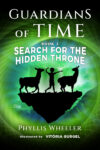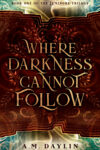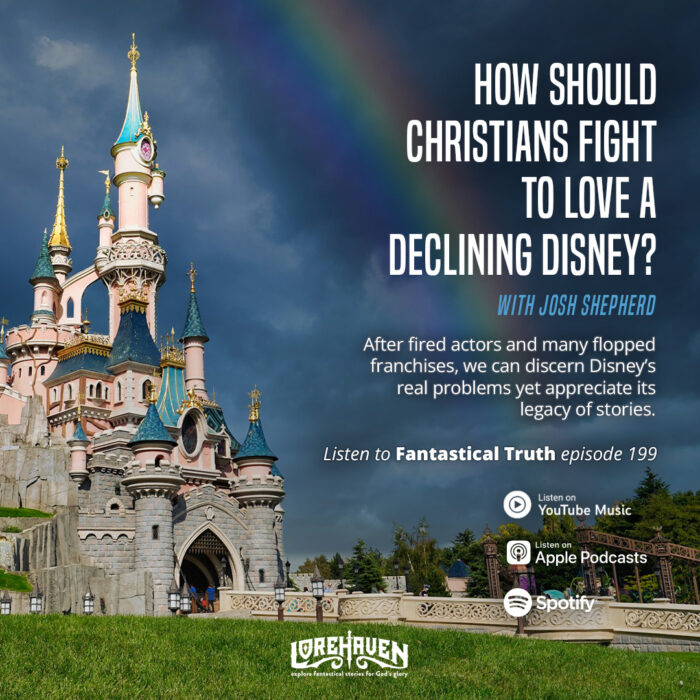The Car-Universe Without A Motor, part 6
This article will look at how “dark matter” is a concept used to explain what would otherwise require massive amounts of coincidence to explain, colossally improbable amounts of random movement of quantum particles all in the right direction on a continuing basis.
Scientists who are for the most part forced to accept the highly improbable, very low entropy distribution of matter after the Big Bang (which I covered in part 3), who cannot offer any verifiable explanation for the constants of particles in the Standard Model or the predominance of matter over antimatter in our universe (part 4), are not willing to accept that the current form of the universe in rotating galaxies and clusters of galaxies constitute random events. No, these observed, er, anomalies, have a single rational explanation, according to theoretical physicists.
Enter dark matter.
Dark matter explains a problem observed in astronomy, first defined by the astronomer Fritz Zwicky in 1933. You see, if you start to calculate the mass of the visible stars in the galaxy–well, not “the” galaxy, any galaxy actually–it isn’t nearly enough. Even if you account for dust clouds and oodles of planets so small they can’t be seen in fields of stars, the amount of matter observed in the universe is not enough. Not enough to maintain the gravitational relationships within clusters of stars (which is what Zwicky observed), not enough to keep stars rotating around the center of the galaxy as quickly as they are observed to be rotating out in the far ends of galactic arms, and not enough to maintain galaxies in clusters (all galaxies should therefore be free-ranging loners, but instead are in groups).
So, since more matter is needed to explain observed gravitational effects, and more of the matter we actually know about would block light and also have other measurable effects on electromagnetic radiation (which includes light and other things like radio waves), therefore this extra matter cannot be any kind of matter that’s actually ever been observed (according to general scientific consensus). It has to be a special kind of matter that does not react with any of the known forces except gravity (leaving it totally immune electromagnetism and probably to to the strong nuclear force and weak nuclear force as well). It really probably should have been called “invisible” matter, because that’s what it is proposed to be–if something does not react to light, you cannot possibly see it. But instead, it’s called “dark” matter, perhaps because it cannot give off light.
Note that dark matter is usually assumed to be some kind of undiscovered particle. Certain particles known as neutrinos barely interact with anything and are likewise invisible. They pass right through you and I and everything else without us ever knowing about them or seeing them, slipping through the rather large amount of empty space contained in every atom. But these particles are known to exist from the Standard Model of particle physics, have a role in atomic reactions that have been verified, and actually have been detected by special experiments that make use of the fact that once in a very great while a neutrino hits the nucleus of an atom directly and causes a reaction.
But there aren’t even any genuine hypothetical ideas about what dark matter could be. The Standard Model does not allow for it. It has never been observed, not in the LHC or other particle physics accelerators. And yet, not only is there are lot of it around, there’s supposedly five times as much of it as there is of regular matter. That’s right, 80% of the matter of the universe is invisible stuff nobody knows anything about. Supposedly.
It’s probably evident already that I find the common acceptance of dark matter among cosmologists, astronomers, and theoretical physicists galling. Really? Scientists, who are all about facts and observation, believe in stuff that cannot be observed or factually verified? For which there isn’t even a likely hypothesis? Really?
Though it is true that sometimes intense gravitation causes a lensing effect that makes images of distant stars or galaxies double or otherwise distort. This so-called “gravitational lensing” is cited as providing direct evidence of dark matter, because regular matter is calculated to be insufficient to explain the real distortions observed. There are also variations in the background temperature of the universe (a.k.a. the CMB or Cosmic Background Radiation) that also are thought to show evidence of dark matter.
I must admit to skepticism–if five times as much matter is dark matter than regular matter, shouldn’t gravitational lensing affect far more distant objects than are actually affected by it? (I mean, shouldn’t gravitational lensing be virtually everywhere in the night sky? Shouldn’t most objects outside our galaxy be distorted or doubled by lensing, instead of just a few?) And shouldn’t there be dark matter black holes? And shouldn’t movement of dark matter in general be towards the centers of galaxies instead of remaining out on the edges, where it has to remain to make the arms of galaxies rotate at the speed they are believed to rotate at? I mean, dark matter should go to galactic centers because gravity pulls things into any gravitational center and dark matter must be affected by gravity to create the forces it that are attributed to it. And if this dark matter is supposedly everywhere, then why doesn’t it cause a spacecraft, say a NASA probe, to ever veer off course? Which hasn’t been documented to happen, not even once–begging the question of how could dark matter could possibly be so evenly distributed, if it is in fact affected by gravity? And aren’t variations in temperature of the universe (the CMB) possibly explicable as previously unknown and unimagined physics at work, instead offering of “evidence” of dark matter? (Note that dark matter requires previously unknown physics–so why couldn’t it be that other unknown physics could affect the CMB?)
There are at least some explanations offered for the questions I raised above (which I won’t cover here), but I don’t find the answers offered wholly satisfactory, since they require dark matter to have a number of special properties which have never actually been observed in nature and which go beyond dark matter merely being invisible. I find the hypothetical ideas behind dark matter to evoke a lot of unobserved principles that really should have been observed if dark matter is everywhere.
Maybe my skepticism is simply a result of not knowing enough physics, but I don’t think so. Some professional physicists have doubted dark matter as well, though not necessarily with my same questions, proposing that perhaps gravity at great distances simply functions differently than the current laws of gravity say it does. One formulation of this idea is called Modified Newtonian Dynamics or MOND (concerning which if you read through the Wikipedia article I attached, you might get the impression that recent measurements of gravitational waves mostly rule out MOND as impossible, but if you read more than just the title of the original highly technical article, you’ll see that isn’t true at all).
I started these posts saying the reasoning they contain would be based on commonly-accepted modern science, which is not the category most people would put Young Earth Creationism in. So I haven’t talked about Creationism at all at up to this point and may not again, but on this topic, a young universe also happens to completely solve these problems (though it causes others, like the “apparent age” problem). Why do galactic arms rotate the way they do? For the Young Earth Creationist, they’ve barely rotated at all and their speeds require no explanation for a period of 6,000 years or so. Why do the galaxies we see seem to be in clusters? Well, first of all the light had to somehow be provided by God for us to know they are there, because there isn’t enough time for it to have traveled naturally–but if you accept that, then the answer to the galactic clusters question is simple. There hasn’t been enough time for them to fly apart.
Though there is another possible explanation that I alluded to in my first paragraph above. If, as far as human-created science currently understands things, quantum mechanics allows for individual particles to assume random motions, if in the very unlikely event that all the particles in all the stars assumed the pattern of rotation we observe and also moved all the galaxies just right to form clusters, then we could have a randomly forming universe in the clusters and motions we observe without any other principle causing it to come about. (Mind you, this is super improbable, worse than the odds of throwing a thread at a needle from 30,000 feet and actually putting it through the eye. But random quantum fluctuations alone do in fact make it possible.)
Evoking a crazy unseen principle (like dark matter) simply because it eliminates massive improbabilities is something atheist scientists usually avoid–especially if the “crazy unseen principle” invoked is God. But these same people, some of them at least, accept dark matter without any serious doubts or objections. Because without dark matter, the improbabilities of the universe forming itself are too staggering to make any sense.
I would say though that these scientists should give the unseen principle of “God” more serious consideration than they actually do. With dark matter, they are putting their confidence in another unseen principle, one I think is less feasible than a concept of a creator God. To explain why I say that, let me return to the analogy I established in previous posts of a car moving either up or downhill.
Let’s imagine that on one side we have the mountain of an early expansion of the universe that produced radically improbable very low entropy right after the Big Bang, a time when the “car-universe” more rationally could “climb” better if it had a “motor” (something driving it, such as God) than if it didn’t. Then, as if there were a rough chasm downhill and a rocky climb back up another mountain, this second rise being that of galaxies formed in the clusters we observe and spinning as we observe them to do (i.e. showing signs of greater mass), our observers decide there is no way the car(universe) could have made it up that second climb on its own, since they are sure it’s simply running downhill on its own inertia. It had to have taken a bridge from the first hill to the second (i.e. there must be something that explains the highly improbable arrangement of the “second mountain,” something that makes the transition from the first mountain to the second “natural”).

A bridge, not quite invisible…
But there is no bridge in sight. You might question the observers about this, but they say, “Don’t worry, the bridge is invisible.”
You go to where the end of the bridge is and try to touch it. “Oh, you can’t touch the bridge either.”
“Has anybody ever seen an invisible and untouchable bridge before? What’s it made of?”
“We have no idea. But it has to be there. See where it touches the mountains?” You can in fact see a pair of indentations, one on each side of the chasm, that might have the shape of the ends of a bridge, but you aren’t at all sure what’s causing them.
“So the car climbed the first mountain on its own? Just by the wheels rolling?”
“Yes, of course.”
“Then crossed down the invisible bridge, the one we can’t touch or directly observe, onto the second mountain?”
“Yes, we’re sure.”
“Maybe the car just had a motor it used to find roads to climb both mountains?”
“Oh, that’s crazy talk!”
I hope my illustration makes it clear that those who accept dark matter as real without hesitation but who dismiss the idea of God are actually contradicting themselves. I would say that suggesting that something may be driving the development of the universe, guiding its final form, is actually no more “crazy” than imagining dark matter to be real, because both ideas make use of something that cannot be seen or directly observed (as of now). That’s true even though dark matter has been defined by various observations of gravitational lensing and mathematical modeling. If dark matter is supposed to be where we are, passing through us right now (and it is imagined to be like that), we should be able to directly measure it. If we can’t (and we can’t), we should at least remain skeptical.
God, of course, cannot be directly measured either. But like a car which drove by us with its front closed, which is no longer available for us to observe, we can make deductions about whether it had a motor or not based on its behavior (did it climb hills on its own?), even if we can’t get our hands on it. We can likewise deduce that seeing actions of God in the creation of the universe cause it to make more sense than it would without God (and God explains a lot more than just galactic clusters and their rotation).
And I would also say that those things we know we have access to, but we in fact cannot detect, deserve more skepticism than things we do not have access to. God will not walk into the lab for us to poke and prod him–but dumb, invisible particles that are supposedly everywhere, including right here and now, and which are subject to our instruments, cannot refuse our investigation. If we cannot find them, not even with methods similar to the ones used to find neutrinos and the Higgs boson, we ought to seriously consider that perhaps they aren’t there. Perhaps the effects scientists think they cause are in fact caused by something else.
It may be that dark matter is actually discovered some day. Perhaps someday soon. But as of now, it has not in any way been directly observed, so I remain skeptical about it.
In the analogy I created, dark matter functions something rather like an invisible bridge–a piece of roadway connecting highly unlikely states, making the second “run downhill” from the first. Even though it would have to be made of things that have never been seen or observed and causes nearly as many problems as it solves, it’s an explanation of past events that insists that what happened with the (car)universe is well accounted for “naturally.”
But the universe isn’t well accounted for “naturally.” I think there’s a simpler and more reasonable explanation.
But what are your thoughts on this topic? Please share them below.










































Both the Big Bang and Creation de ex Nihilo assume different laws than we can scientifically observe today. Frankly I think Creation Science is an oxymoron. Creation was a BIG MIRACLE and therefore outside the laws of science. I admit this as a Creationist Christian.
Dark Matter has intrigued me, though I never knew till reading this how unsubstantiated this hypothesis is. I sort of assumed it had been proven. Now it sounds a lot like the Multiverse Theory.
Rachel, dark matter not as tenuous as the multiverse, but it’s much more so than most people realize.